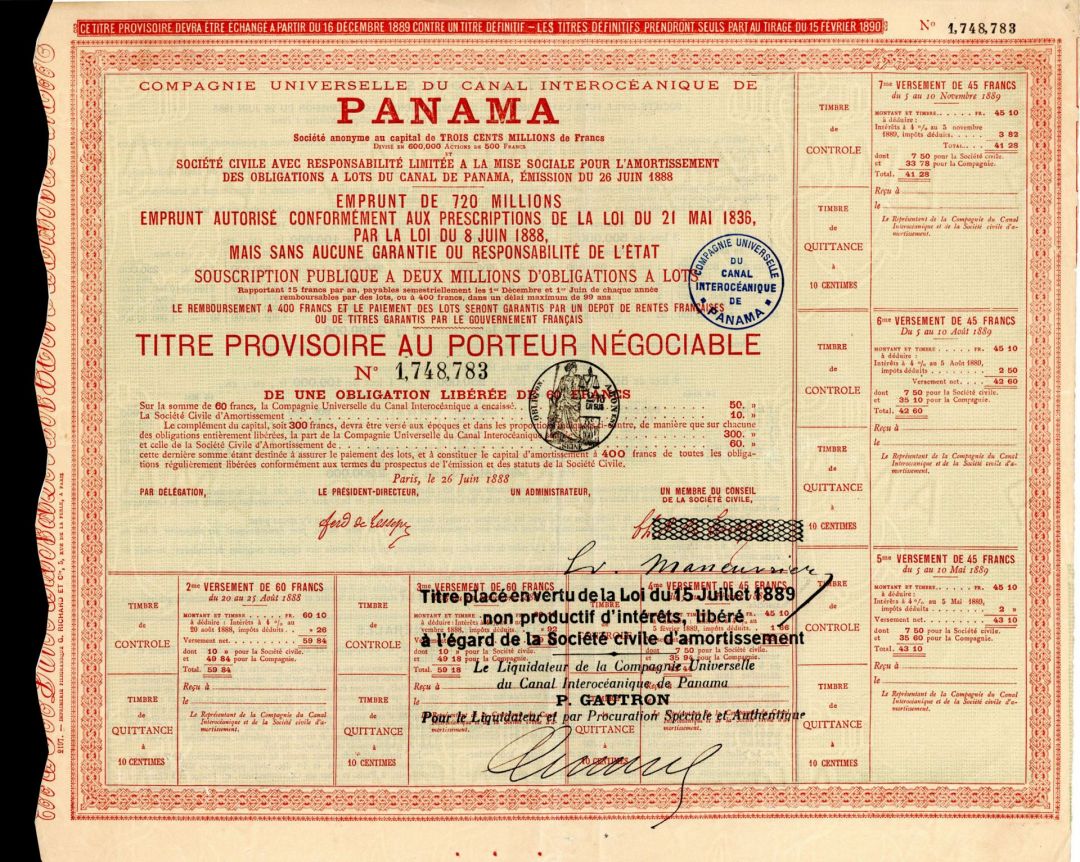Panama-Companie Universelle Du Canal Interoceanique de Panama - 1888 dated Bond - Extremely Famous
Inv# FB5046 BondPanama
60 Francs Bond. Historically important provisional bond. Quite a complex piece with much detail at front and back. Scarce and exciting! The idea of the Panama Canal dates back to 1513, when Vasco Núñez de Balboa first crossed the isthmus of Panama. The narrow land bridge between North and South America was a fine location to dig a water passage between the Atlantic and Pacific Oceans. The earliest European colonists recognized this, and several proposals for a canal were made.
By the late nineteenth century, technological advances and commercial pressure allowed construction to begin in earnest. Noted canal engineer Ferdinand de Lesseps led the initial attempt by France to build a sea-level canal. Beset by cost overruns due to the severe underestimation of the difficulties in excavating the rugged terrain, heavy personnel losses to tropical diseases, and political corruption in France surrounding the financing of the massive project, the canal was only partly completed.
Interest in a U.S.-led canal effort picked up as soon as France abandoned the project. Initially, the Panama site was politically unfavorable in the U.S. for a variety of reasons, including the taint of the failed French effort and the unfriendly attitude of the Colombian government (at the time, the owner of the land) towards the U.S. continuing the project. The U.S. first sought to construct a canal through Nicaragua instead.
A bond is a document of title for a loan. Bonds are issued, not only by businesses, but also by national, state or city governments, or other public bodies, or sometimes by individuals. Bonds are a loan to the company or other body. They are normally repayable within a stated period of time. Bonds earn interest at a fixed rate, which must usually be paid by the undertaking regardless of its financial results. A bondholder is a creditor of the undertaking.











Ebay ID: labarre_galleries